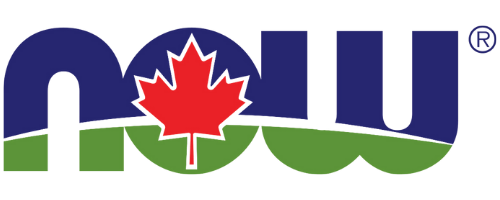Nanotechnology in Nutritional Supplements – A Scientific and Regulatory Review and Update
Emerging Technology
In recent years, nanotechnology has emerged as a promising method of delivering bioactive materials to humans through skin care products, pharmaceuticals, packaging, foods, and dietary supplements. Some players in the dietary supplements and personal care products industries view nanotechnology as a major breakthrough and would like to use it as a way of increasing the benefits of nutraceuticals and cosmetic products. However, others are concerned about the fate of nanoscale particles in our bodies and in our environment.
Nanotechnology deals with materials that are smaller than 100 nanometers (1 nanometer = 1/100,000th of a millimeter). It is the art and science of manipulating matter at the nanoscale to create new and unique materials and products. Nanoparticles however, do not behave like conventionally sized particles – they display novel characteristics based on the quantum mechanical forces that are exhibited at this level. These quantum mechanical forces may make the material stronger, more conductive, better able to transfer heat, absorb light, have altered solubility properties, etc. However, the changes in properties that accompany this change in scale can also create a plethora of unintended effects – many of which are currently poorly understood.
Increased Use of Nanotechnology and FDA Involvement
Nanotechnology is already being sought as a major source of innovation for food products, food packaging, dietary supplements, and cosmetics, in spite of the poor understanding of the implications of its widespread use. Nanomaterials were introduced to the general consumer market in 2005 and consumer exposure to nanoparticles in everyday products has undergone continuous growth since then. Although there is no question that the applications of nanotechnology are potentially beneficial and far-reaching, the safety of this technology has not been established as certain.
In response to the increasing use of nanotech in foods, supplements, and cosmetics, the FDA formed a task force on nanotechnology in 2007 in order to address safety and regulatory concerns. In April, 2012, two draft guidance documents focusing on nanotechnology were issued by FDA, one for foods and one for cosmetics.1 Note that while neither document addresses dietary supplements specifically, they are considered to be a category of foods by FDA, and it is likely that the draft guidance on foods will directly impact the dietary supplements industry.
In the nanotechnology draft guidance for food,2 FDA states that alterations in the physical and chemical properties of a food substance can affect its bioavailability through altered absorption, distribution, metabolism and excretion. In addition, they acknowledge that such changes in the substance’s biological interactions can affect the level at which toxic effects may occur. This position creates regulatory significance because in the recently issued New Dietary Ingredient (NDI) draft guidance,3 FDA lists nanotechnology that results in new or altered chemical properties of the ingredient as an example of a processes that creates a new dietary ingredient and thus can require a notification to the FDA.4
Labeling
Labeling of new ingredients is another subject of discussion. There are no specific requirements for labeling products containing nanoscale ingredients. Moreover, there is no requirement for nanomaterials to be labeled as such. Because these ingredients are treated like any other NDI, and because no safety assessments are necessary for pre-market approval, the lack of labeling guidelines means that consumers are often not given the opportunity to make informed choices regarding whether or not they want to use these products.. Furthermore, some products are labeled to imply that they include nano-sized materials that the products do not in fact contain. It is the ambiguity in the labeling of these products that makes it difficult for the consumer to determine the true nature of their ingredients and no rules have been forthcoming.
While this issue remains in limbo, consumers must be made aware of developments within the field of nanotechnology so they can make informed choice regarding the use of products produced via this technology. Unfortunately, the science behind nanotech is very complex, and consumers are therefore more vulnerable to misinformation both for and against the use of these products.
NOW Foods is striving to maintain an accurate and balanced view of this issue. There is no doubt that nanotech products promise untold benefits in the area of personal care and nutrition. However, there are still too many unanswered questions regarding the safety of this new technology. Even the most enthusiastic proponents for the development of nanotechnology agree there are unknown risks involved in the widespread use of nanomaterials. NOW Foods is primarily concerned with the health and well-being of consumers. Employing a safety-based agenda, we continue to watch the development of nanotechnology and its use in nutritional products and continue to take a conservative approach to the use of nanomaterials. At this time, we have not and continue to have not included nanoparticles in our products, nor do we use the word “nano” to market our products. NOW Foods seeks to “Empower People to Live Healthier Lives” and we want to ensure that all of our products are consistent with that mission.
References:
1 FDA issues draft guidance on nanotechnology. U.S., FDA, April 20, 2012. Available at: http://www.fda.gov/NewsEvents/Newsroom/PressAnnouncements/ucm301125.htm. Accessed 10 February, 2014.
2 Guidance for Industry: Assessing the Effects of Significant Manufacturing Process Changes, Including Emerging Technologies, on the Safety and Regulatory Status of Food Ingredients and Food Contact Substances, Including Food Ingredients that are Color Additives. U.S. FDA, April, 2012. Available at: http://www.fda.gov/Food/GuidanceRegulation/GuidanceDocumentsRegulatoryIn…. Accessed 10 February, 2014.
3 Draft Guidance for Industry: Dietary Supplements: New Dietary Ingredient Notifications and Related Issues. U.S. FDA, July 2011. Available at: http://www.fda.gov/food/guidanceregulation/guidancedocumentsregulatoryin…. Accessed 10 February, 2014.
4 New Dietary Ingredients in Dietary Supplements – Background for Industry. U.S. FDA. Available at: http://www.fda.gov/food/dietarysupplements/newdietaryingredientsnotifica…. Accessed 10 February, 2014.



